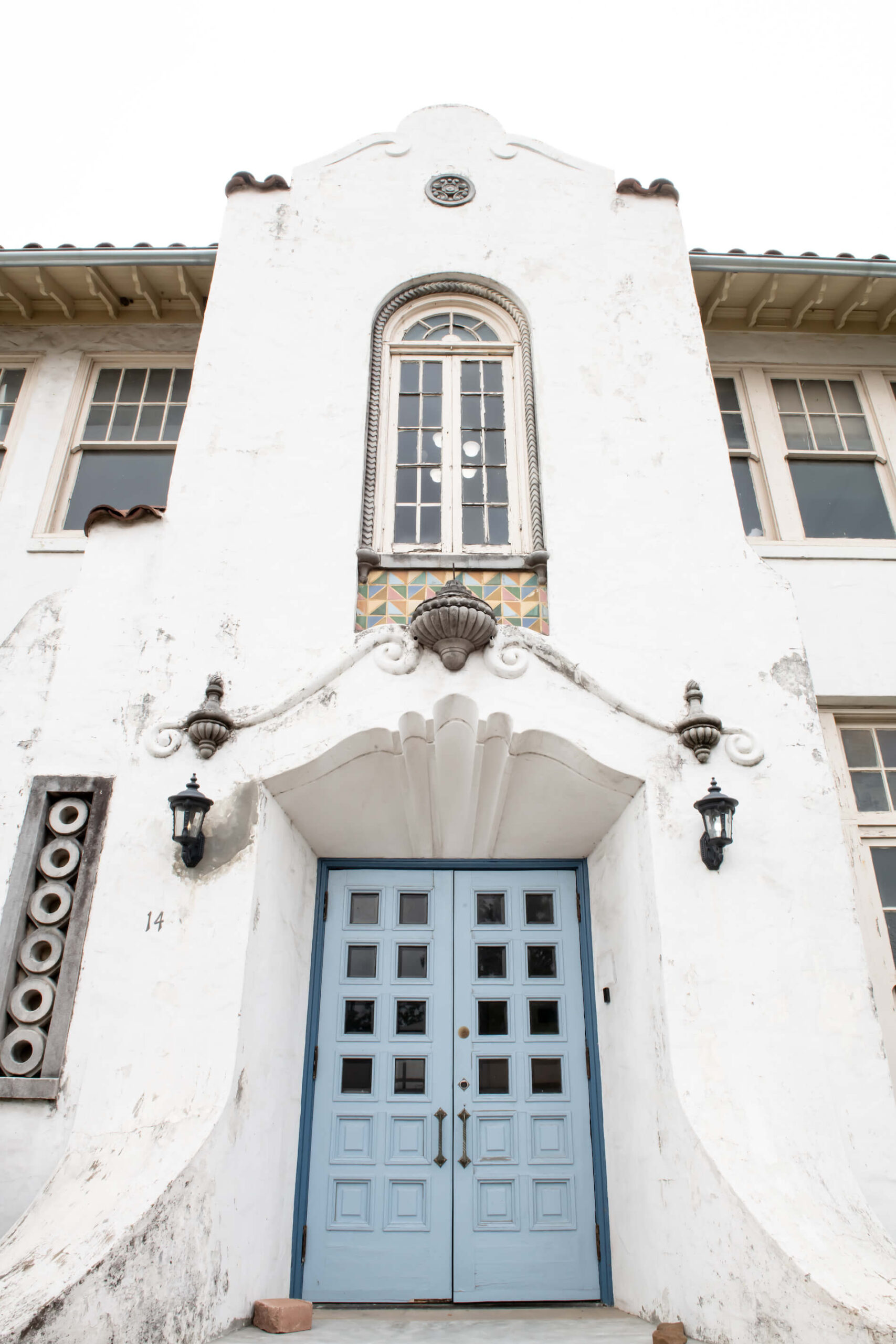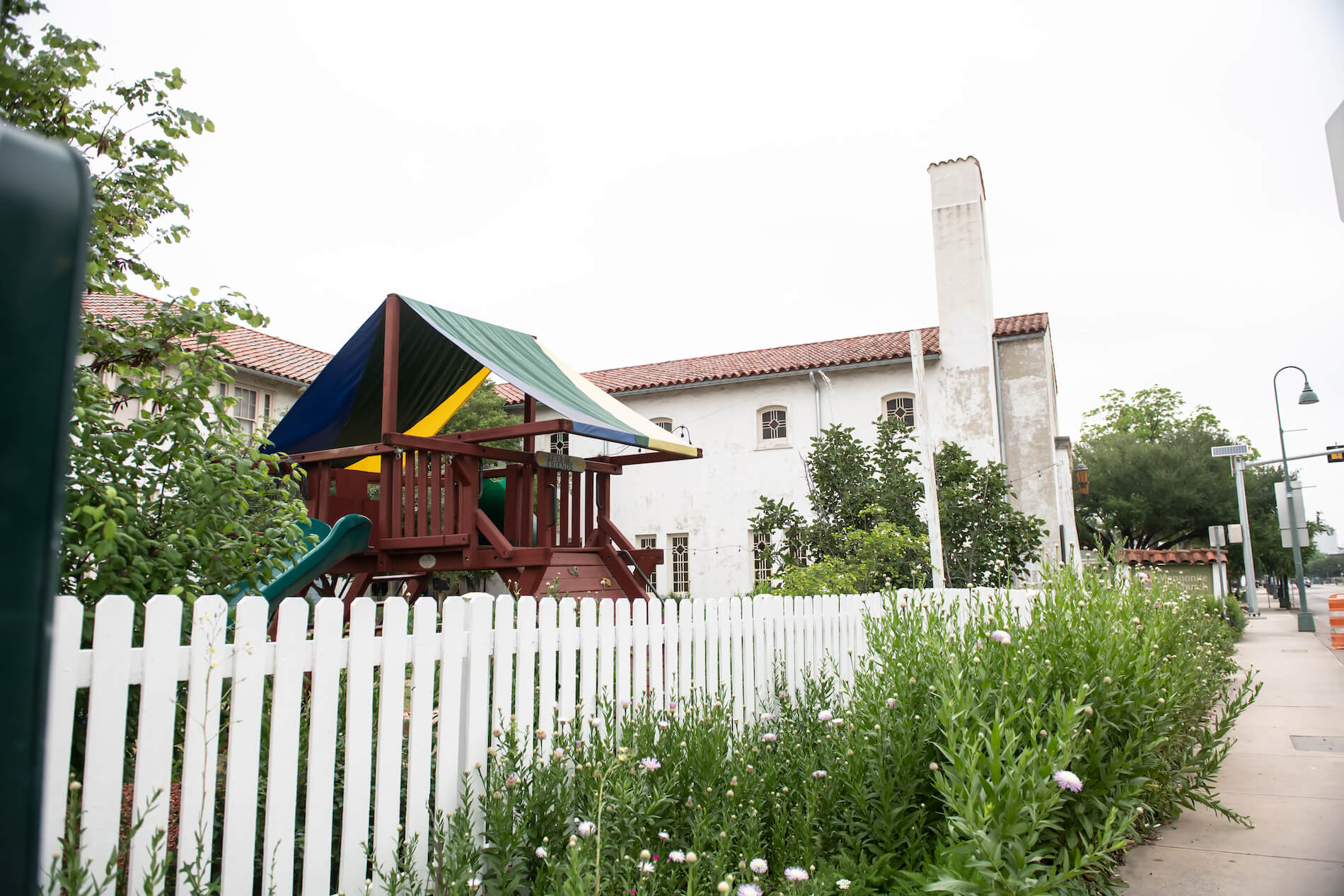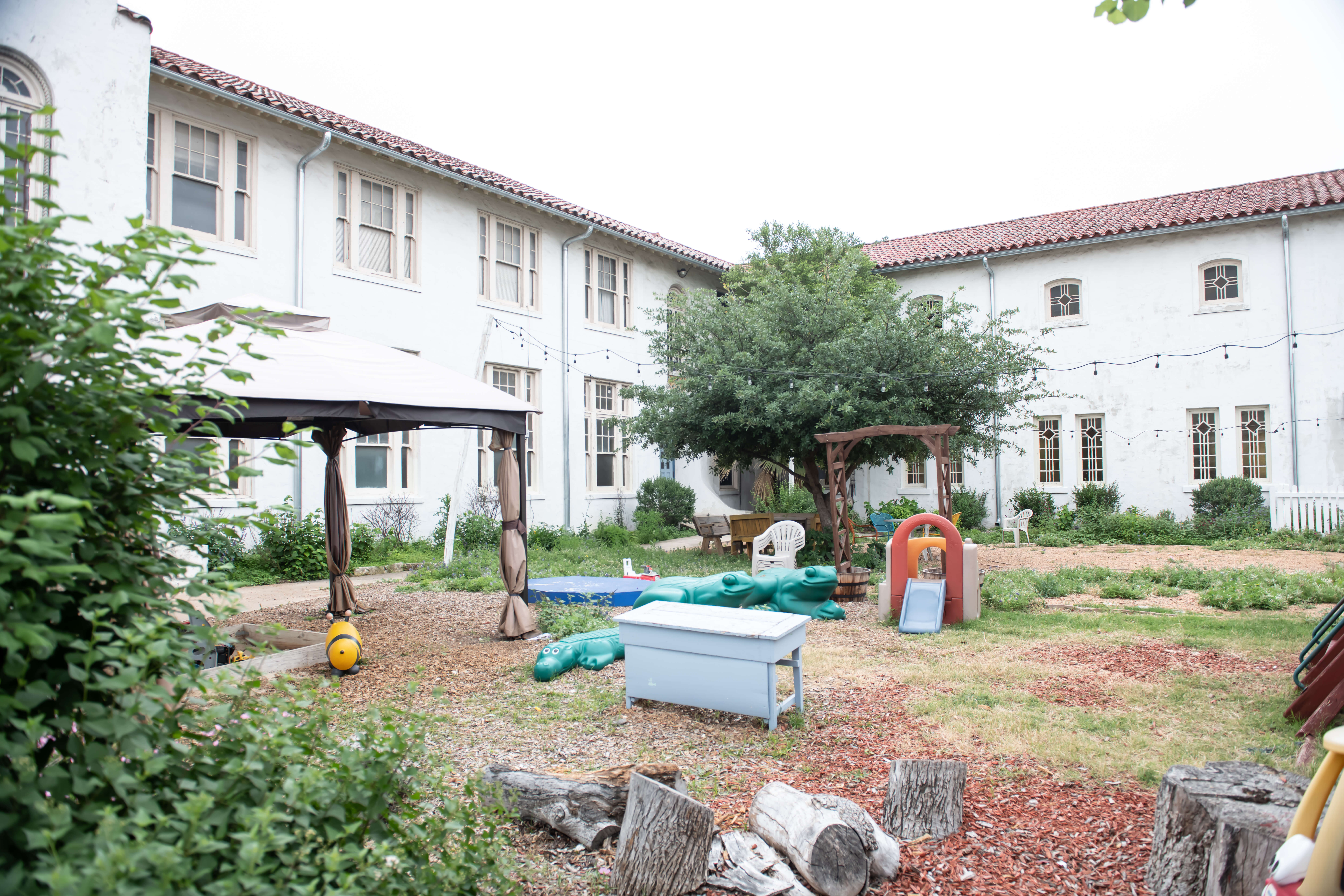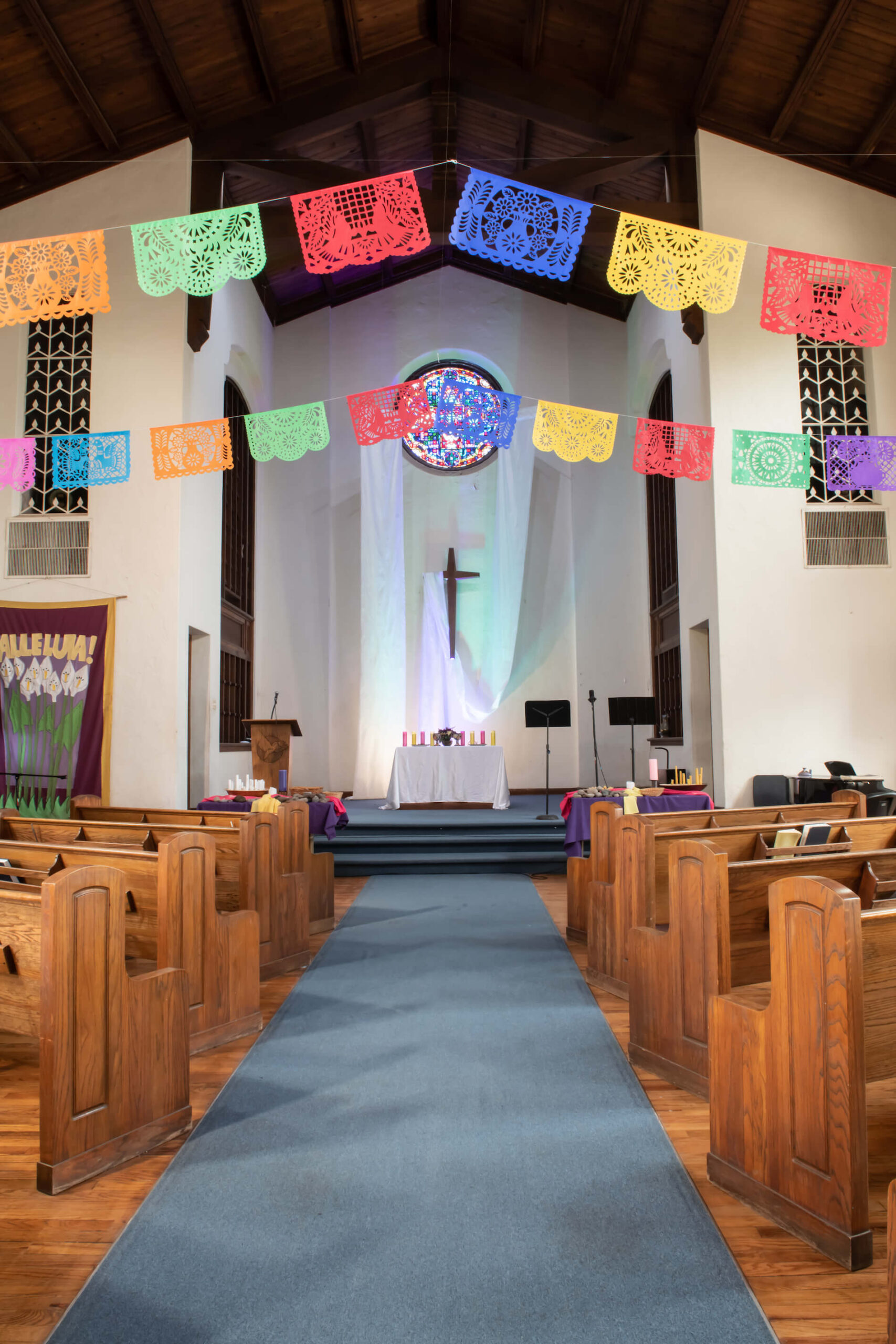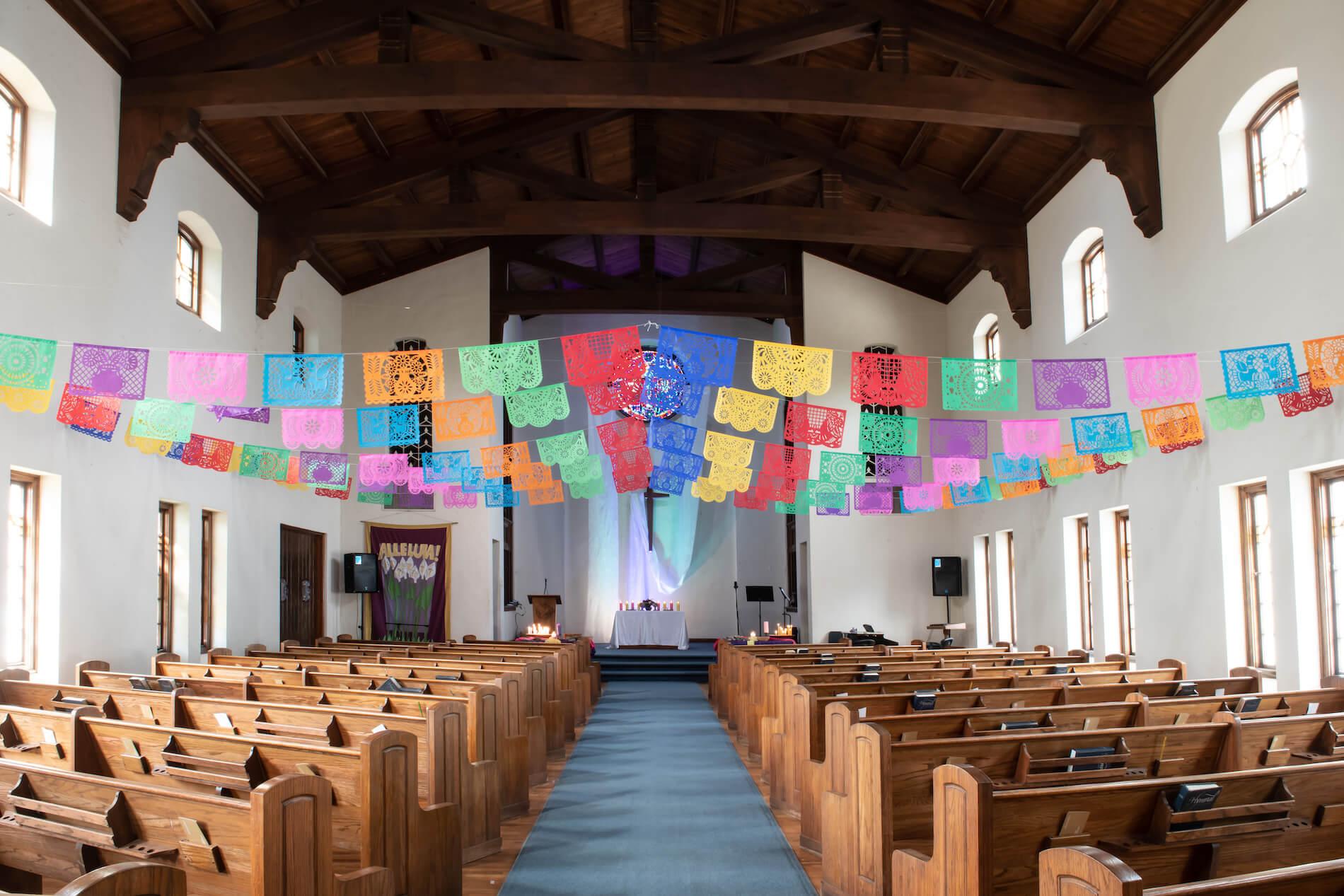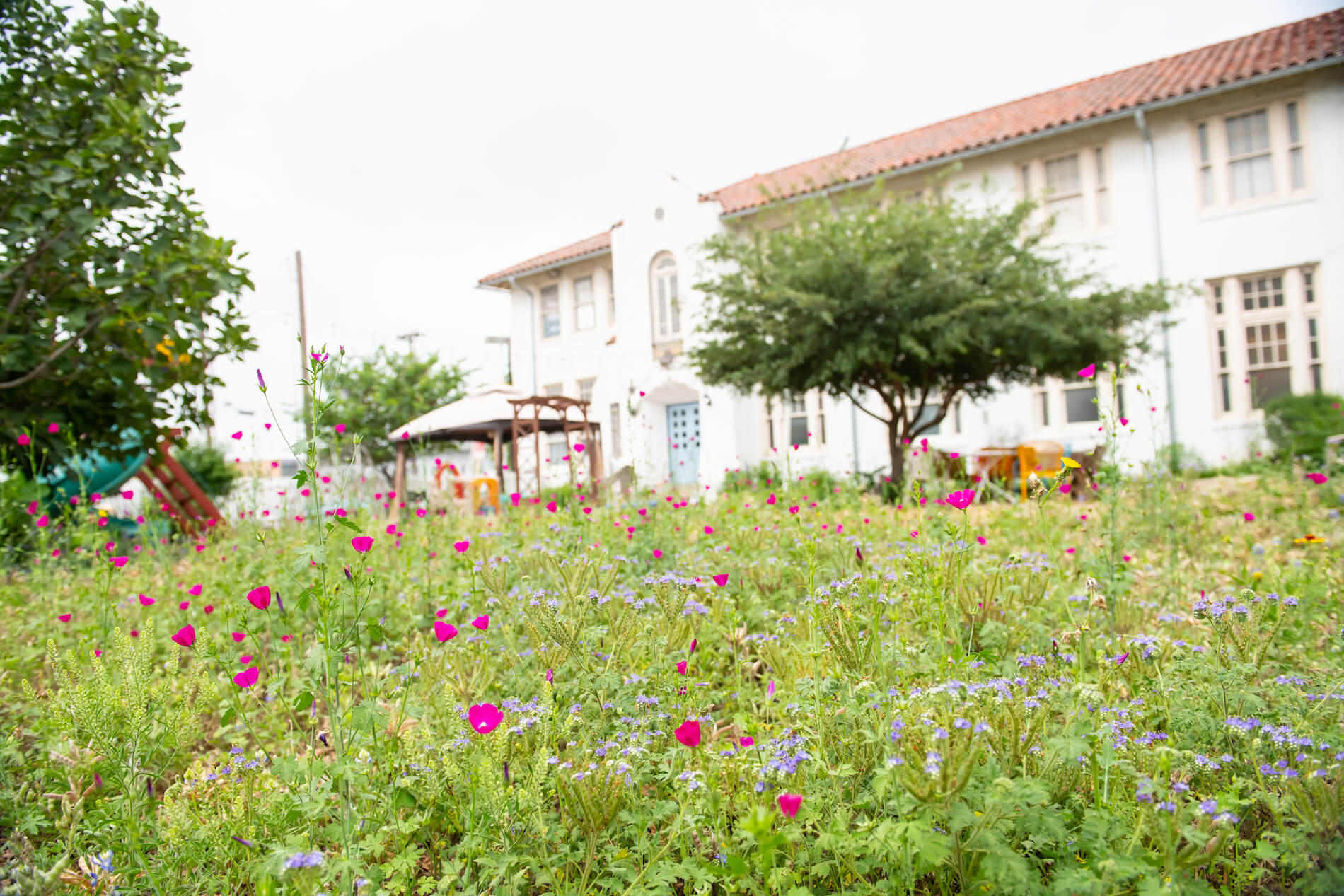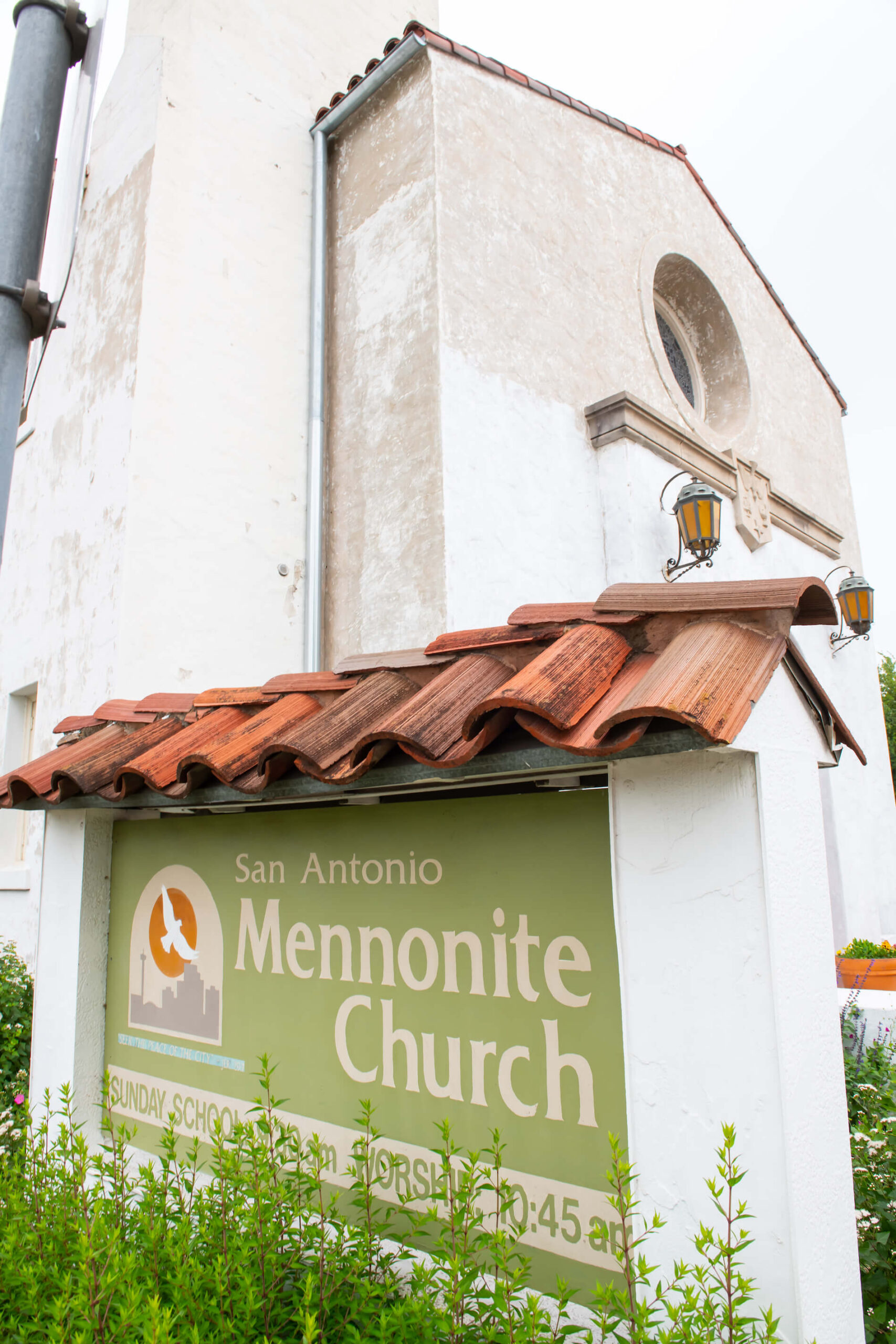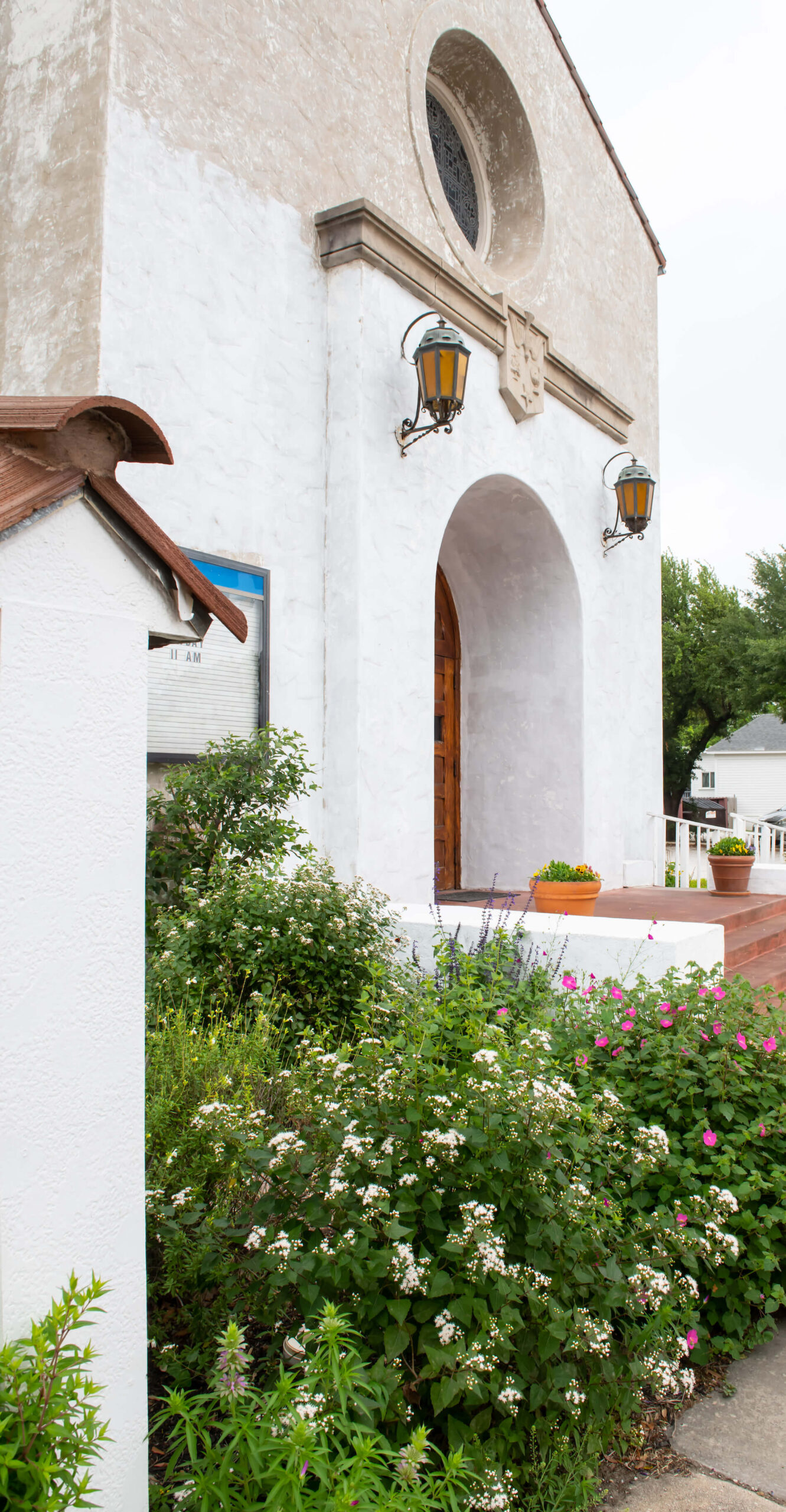In December of 2022, Mitzi Moore of San Antonio Mennonite Church spoke with Partners for Sacred Places about the congregation’s participation in the New Dollars/New Partners for Your Historic Sacred Place program and how their fundraising, building maintenance, and mission have changed as a result in the subsequent near decade.
Tell us about your church building.
San Antonio Mennonite is a beautiful, historic church—the sanctuary dates to 1949 and the rest of the building 11 years earlier. It’s located in a historic district. The church was formerly Presbyterian, and that congregation gave us a good deal when we bought it from them. They were very generous. But then we owned the building and did not have the money for maintenance. We found out that with all the things wrong with the building it needed over one million dollars’ worth of work, which was well over our annual budget.
How did your initial attempts at fundraising go?
We had an aging building that needed massive work, but we didn’t know where to start. And we used our building for activities beyond worship. We had a domestic violence group using the space, and several other community groups. We had a Narcotics Anonymous group that met weekly in our hall, but we had no working air conditioning, which is a big deal in Texas. The maintenance problems were affecting our ability to use the church buildings, and others’, too. I was the congregational chair, and I stepped down to become the fundraising chair. Our first attempts at raising money for the repairs were not very fruitful. We tried shopping hours at a local retail establishment and made only $200. Then we did a Christmas card appeal and again made only a few hundred dollars.
When did you start to make progress with the fundraising?
We were referred to Partners for Sacred Places’ New Dollars/New Partners program by a Presbyterian partner church and decided to try it. In the fall of 2014, we participated and met four times over several months. The program taught us how to tell our story. We went through exercises to explore the history of our building and the potential of the space. From a fundraising perspective, we learned that 60% of renovation donations come from individuals outside of the congregation. So we started telling our story to the community to see how they could support us.
To get things rolling, we put a house we had acquired on the market and planned to use the sale money for the most urgent renovations. We needed new HVAC and electrical systems, and to move the bathroom and shower area away from the kitchen. That was going to cost half a million dollars! We utilized our resources to cut costs where we could. For instance, an engineer in our congregation did the plans for free. The house deals kept falling through, and one day I took some new congregants to see it. I posted pictures of the house from that visit on Facebook, hoping to spread the word, and it sold that day, from the posts!
One of the congregants to whom I showed the house told me about Impact San Antonio, an organization of 500 women who each contribute $1000 to a pool and give the money to charity annually. Organizations in need make their case to the group to receive the money. After learning about Impact San Antonio, we applied to be one of the five organizations to receive the money and we made it all the way to the finals. In the finals, two people stand up in front of the whole group to pitch, and the vote takes place then and there. The storytelling we learned in New Dollars/New Partners really made a difference. While we didn’t win the big prize that year, we did win $10,000, and an individual was so compelled by our story that she decided to match that amount. The next year we pitched Impact San Antonio again and won for our category—$100,000! We used that money to renovate our upstairs, which hosts nonprofit organizations focused on education, immigration, and refugee services.
How has your church mission changed or evolved?
Our mission has changed! We have 50 people in the pews on a good Sunday, and we have online services, too, but our church is a lot more than worship. A year after we did the New Dollars/New Partners program there was a crisis in the immigration world here. We owned a house near the immigration detention center where we invited folks awaiting next steps to stay. People stayed with us while their family members received medical attention, etc. That December a local judge made a ruling that released hundreds of detainees with nowhere to go. Five hundred people slept in our church that night—with no heat! The news picked up that story, and we got a reputation for being a church that helps. Catholic Charities and the Interfaith Welcome Coalition got more involved locally in creating temporary shelter for immigrants, which led to us seeking out a niche where there was more need. We now provide long-term care to immigrant women who don’t have a place to go and have decided to settle here. We offer education, transportation, and medical care, give them a place to stay, and provide their legal fees.
How has your fundraising evolved?
The storytelling skills that we learned in New Dollars/New Partners helped tremendously. Our mission statement articulates that we’re a joyful and loving community that does justice, loves mercy, and walks humbly with our God. But we knew we couldn’t fulfill our mission if we didn’t have a habitable space. We needed to determine how the buildings could help us serve the community. Now we capitalize on our buildings by renting out space. We just had a wedding here, and we also host visitors and events. Having income allows us to do upkeep on the buildings, which enables us to carry out our mission work. For instance, we recently hosted a respite center for asylum seekers, where folks could shower and wash clothes, use our childcare center, and have a hot meal.
How has the maintenance and use of your building changed?
We aren’t going from crisis to crisis anymore. Instead, we think, how do we get regular maintenance for our air conditioner. And we take advantage of volunteers to do smaller tasks, like paint. While the volunteers are here, we tell them about our work. They, in turn, go back to their home congregations and communities to tell our story, and we get more donations.
How is the health of your congregation?
The service programs continue, and they are a draw for prospective congregants. New people are joining us all the time. We have more young families now. But above all, we have peace of mind. We have well-maintained space and income to do the work we are called to do.

